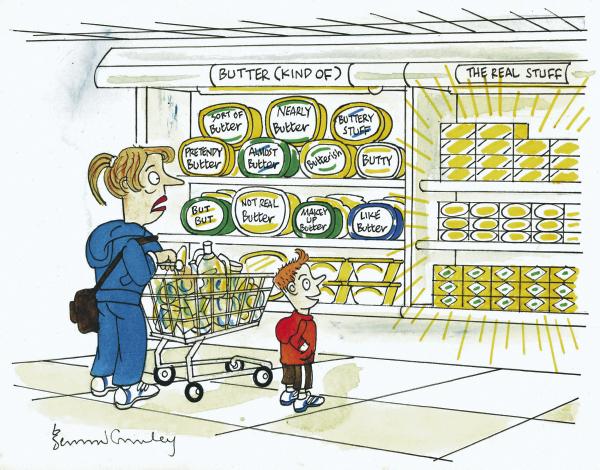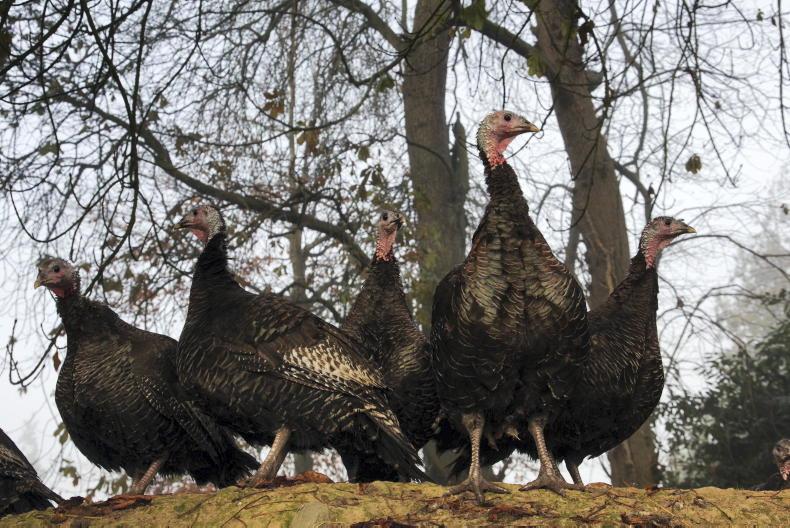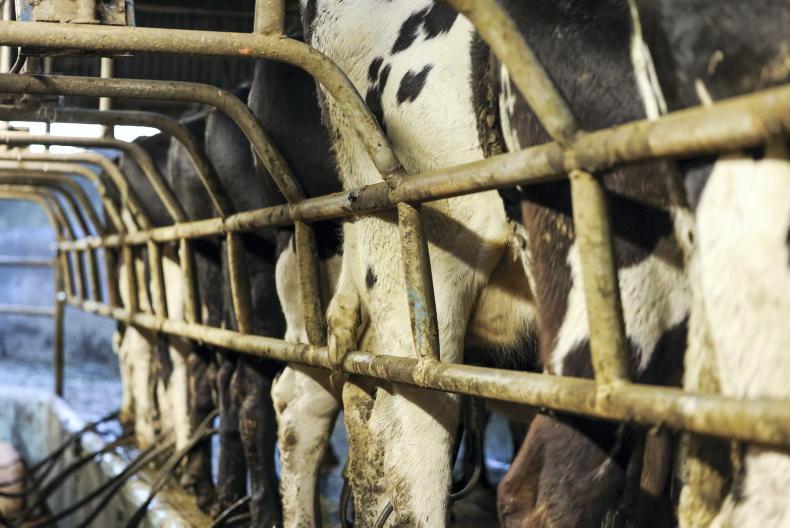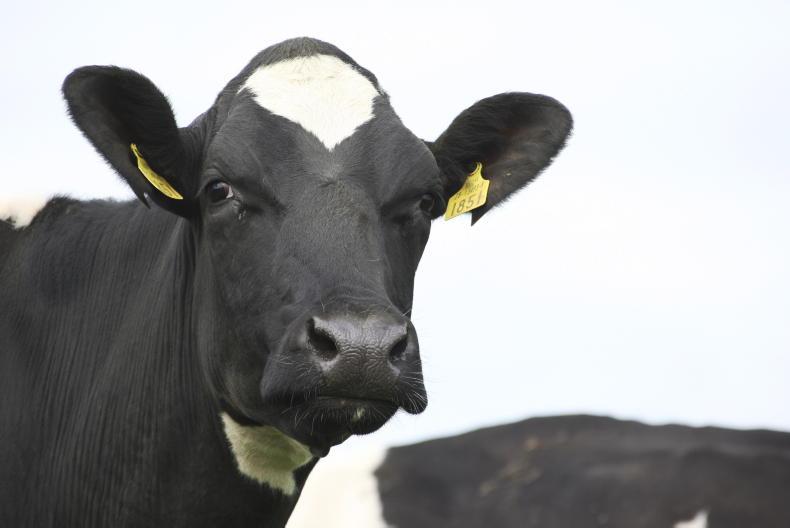Irish consumers are being bombarded with a vast array of spreadable fat products which are using the word “butter” on their labels despite the fact that they contain over 99% non-dairy ingredients.
These products have an average dairy content of just 0.9% and in some cases no dairy fat whatsoever. A minimum dairy fat content of 80% is required in order to legally use the term “butter” to describe the product.
The Irish Farmers Journal visited the main retail chains in Ireland – Aldi, Centra, Dunnes, Superquinn, Super-Valu, Lidl and Tesco, who account for over 90% of the
Irish grocery market.
We purchased any non-butter product that carried the word “butter” or a version of that word, such as “buttery”, on the pack. Thirteen products fitted that criteria and are listed in the table below.
Based on their ingredient listing, we have estimated their dairy solids and dairy fat content. The highest, at 2.35%, is “Totally Buttered” from Dromona, which, incidentally, is the only product that contains the plant number showing where it was made. The other products do not – but they are not required to, as, despite the inference to the contrary, they are not legally categorised as a dairy product.
Under dairy hygiene regulations, dairy products, such as butter, cheese and yoghurt, must carry an identifier showing the plant code where the product was packed.
There are clear rules around what can and cannot be called butter. Under these EU rules, the word “butter” is exclusively reserved for milk prodcuts, defined as “products derived exclusively from milk”, where the milk fat has not been replaced by a non-dairy fat, such as cheaper vegetable fat.
The spread products listed below that use variants of the word “butter” on their labels have an average milk fat content of less than 0.1%. They would need much higher levels of milk fat and no vegetable fat to be legally entitled to use the name butter to describe their product.
While none of the products call themselves butter, they do test the boundaries of labelling rules and mis-use the term butter in a manner that I would argue has serious potential to confuse or mislead consumers.
EU labelling rules require that “the name under which a product is sold ... is clear enough to let the purchaser know its true nature and distinguish it from other products with which it might be confused”.
There is a strong argument that some of the products listed here could potentially cause some consumers to mistakenly believe that they are buying butter, or a variant of it.
The manufacturers of the products listed below will argue that they use the word “butter” as an adjective similar to the way a potato may be described as “floury”.
However, no consumer would confuse a potato with flour, but I maintain that there is a strong potential for confusion in this case. Under EU regulations, it is clearly stated that “no label ... or any form of presentation may be used which claims, implies or suggests that the product is a dairy product”.
In addition, where there is potential for the name of the product to cause confusion among consumers, “the sales name shall be accompanied by other descriptive information which shall appear in proximity to the sales name”.
Some of the fat spreads listed, such as Kerry Group’s “Move Over Butter” and “Benecol Buttery”, do not meet this requirement.
In terms of enforcement, this issue falls under the remit of the Food Safety Authority of Ireland (FSAI), which has responsibility for food labelling. The FSAI confirmed to the Irish Farmers Journal recently that it is considering action on the issue of fat spreads mis-using the word “butter” on their labels and in their advertising.
“It has been brought to our attention in recent weeks,” Dr Pat O’ Mahony, chief specialist with the Food Safety Authority, said. “We have completed an assessment of the products on the market. Based on what we have seen, there is certainly some potential for consumers to be misled,” he said.
The FSAI confirmed on Tuesday that it has written to the industry with its concerns and outlined the legislative restraints.
“The FSAI is currently awaiting a response and may request a meeting with the industry before deciding on the best means to ensure compliance with the legislation,” a spokesperson said.
| Product | Retailer | Manufacturer | Ingredients | % Buttermilk Powder | % Buttermilk | % Solids (Dairy) | % Milk Fat |
|---|---|---|---|---|---|---|---|
| Beautifully Butterfully | Aldi | Not listed | 54% Veg Fat Spread with buttermilk. Veg oil(rapeseed,palm), Water, Re. Bmilk (5%) Salt (1.5%) | 0 | 5 | 0.420 | 0.040 |
| Utterly Butterly | Not listed | 49% Veg Fat Spread, Veg oils, water, Buttermilk (9%) Modified Maize Starch, Salt (1.6%) | 0 | 9 | 0.756 | 0.072 | |
| Benecol Buttery | Not listed | 60% reduced fat spread with added plant stanols. Veg oils, water, plantstanolester (plant stanol 7%) Bmilk powder (1.5%), Salt (1.2%) | 1.5 | 0 | 1.448 | 0.120 | |
| Totally Buttered | UK NI 209 M EC * | 49% Veg Fat Spread. Veg oil (49%), Water, Reconstituted Buttermilk (28%) Salt (1.4%) | 0 | 28 | 2.352 | 0.224 | |
| Move over Butter | Kerry Foods | 54% Veg Fat Spread(buttermilk & veg oil) Veg oils, Water, Reconstituated Bmilk (3%), Salt (1.5%) | 0 | 3 | 0.252 | 0.024 | |
| Flora Buttery | Unilever | 70% Veg fat spread with buttermilk. Veg Oils (seed oils82%), Water, Bmilk(10.5%), Salt (1.5%) | 0 | 10.5 | 0.882 | 0.084 | |
| I can't believe it's not Butter | Unilever | Veg Oils, Water, Buttermilk (4%), Salt (1.5%) | 0 | 4 | 0.336 | 0.032 | |
| Heavenly Buttery | Lidl | Not listed | 59% Veg Fat Spread with buttermilk, Veg oil, Water, Salt (1.6%) Buttermilk Powder 1% | 1 | 0 | 0.965 | 0.080 |
| Irish Butter Me Up | Tesco | Not listed | 59% Veg Fat Spread with buttermilk. Veg oil, Water, Reconstituted Buttermilk (12%), Salt (1.3%) | 0 | 12 | 1.008 | 0.096 |
| Irish Buttery | Tesco | Not listed | 49% Veg Fat Spread. Water, Veg oils, Salt, Reconstituted Buttermilk (9%) | 0 | 9 | 0.756 | 0.072 |
| Taste of Butter | Dunnes | Not listed | Veg Oils, Water, Salt (1.3%), Reconstituted Buttermilk (12%) | 0 | 12 | 1.008 | 0.096 |
| Oh so Buttery | Centra | Not listed | 59% Veg Fat Spread with buttermilk. Veg oil, Water, Reconstituted Buttermilk (12%), Salt (1.3%) | 0 | 12 | 1.008 | 0.096 |
| Oh so Buttery | SuperValu | Not listed | 59% Veg Fat Spread with buttermilk. Veg oil, Water, Reconstituted Buttermilk (12%), Salt (1.3%) | 0 | 12 | 1.008 | 0.096 |
**This article is from the Farmers Journal archive. It was first published on 25 May 2013.





















SHARING OPTIONS